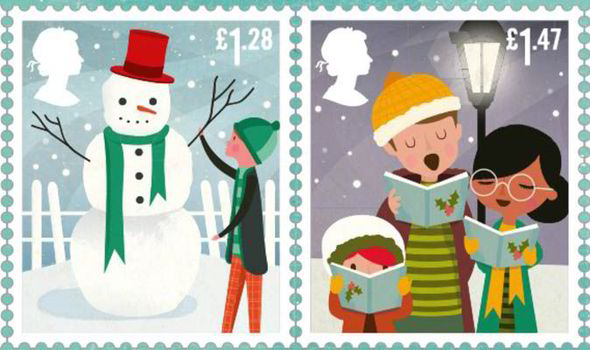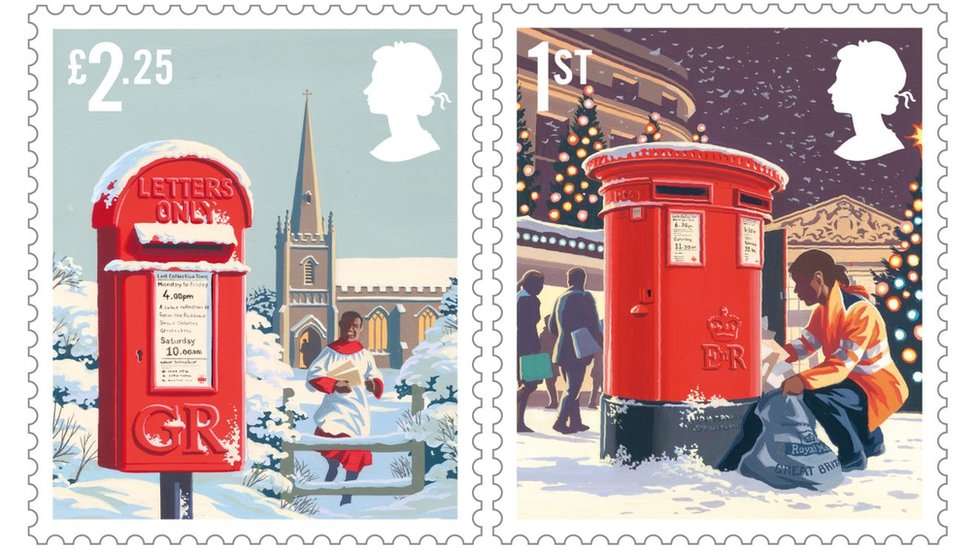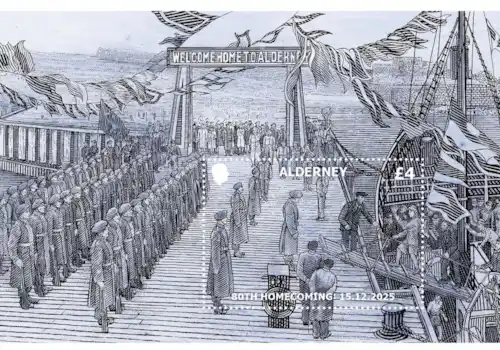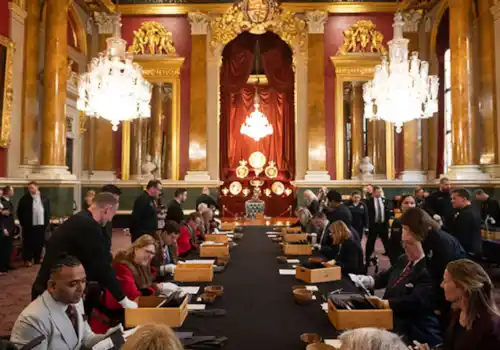07 November 2025
|
When he became Postmaster General in October 1964, Tony Benn suggested seasonal stamps be issued the following year, prompted by repeated requests from the public for Christmas stamps. Since then, there have been a variation of Christmas stamps every year, here are some of the most prominent.
The Origins of Christmas Stamps
Officials within the Post Office were adamant that Christmas stamps could not be issued as they did not meet the existing criteria for special stamps.
Benn had his own views, so when he put forward his programme of special issues for 1966, it included a set for Christmas.
In his plans for 1966, Benn thought that the designs for the Battle of Hastings set should be the result of a competition among schoolchildren. However, those responsible for stamp design within the Post Office thought such a competition much more suitable for the Christmas set.
Over 5,000 entries were received, judged by a team of eight stamp designers. Britain’s first Christmas stamps were issued on 1st December and featured The King of Orient and a Snowman submitted by Tasveer Shemza and James Berry.

Reactions to the set were mixed, although the idea of using children’s designs was repeated in 1981 and 2013. Given that, among the special issues of the year, Christmas sees the greatest use, it is hardly surprising that the stamps come in for the most comment.
Suggested article: Royal Mail Unveils Modern 2025 Christmas Stamps
The Designs of Britain’s Christmas Stamps
The pattern that has developed of alternating religious and secular themes seems to satisfy most, although finding original design concepts each year remains a challenge. However, a glance through the stamp catalogues show that Royal Mail manages to find a fresh approach every year.
Themes chosen have included religious painting, the Christmas story and celebrations, Angels, stained glass windows, Christmas carols and songs, Father Christmas, Christmas decorations, Pantomime, Christmas cards and Robins. Through to the more unusual ice sculptures and Wallace and Gromit.

A break from the ‘formal’ Christmas set came in 1999 and 2000. Royal Mail decided to mark the new millennium with a series of 25 sets spanning the two years and concluding in January 2001. The original intention was that there would be no other special issues during this period.

However, we all know what happens to the best laid plans: Prince Edward’s wedding and The Queen Mother’s 100th birthday both demanded separate issues. Thus for 1999 we saw four stamps styled ‘The Christian’s Tale’ issued on 2 November, and in 2000 a further four stamps marking Millennium projects on the theme of ‘Spirit and Faith’, issued on 7 November, fulfilled the need for Christmas stamps those years.
Self-adhesive Christmas Stamps
Prior to 2001, self-adhesive stamps had only been available from Royal Mail in booklets. That year the first self-adhesive stamps in normal sheets were issued – for the Christmas set.
All subsequent Christmas stamps have been self-adhesive; however, since 2004 a miniature sheet combining the stamps has also been issued each year, these having standard water-soluble gum.
In 2006 came another change, the size of the Christmas stamps becoming the same as the standard definitives, including the introduction of ‘Large’ versions as part of the ‘Pricing in Proportion’ scheme launched that year. The demand for this change came primarily from Post Office Counters, wishing to align the Christmas stamps with standard definitives in view of their high usage.
However, keeping the format to definitive size does put a constraint on designers and can detract from the designs, so a compromise has been reached. From 2012, while the designs retain definitive ‘proportions’, they are slightly larger.
Christmas Stamp Errors
An error that some might still be unaware they own occurred in 1988. Sometimes stamps are printed, only for a change of tariffs to be introduced before they are released.
The stamps must be printed afresh with revised denominations. This happened for Christmas 1988. Stocks had been printed of the lowest value as 13p, but the rate was increased to 14p before issue.
While most of the 13p were destroyed, some had been used to make up the Yearbooks for 1988. Collectors prefer that Yearbooks remain unopened in their cellophane wrapping. Do examples of the error still exist in unopened Yearbooks?
While some may now question the need for special stamps, even definitives, the demand for Christmas stamps goes unabated.
To learn more about all things stamps, subscribe to Stamp Collector inc Coin Collector today!









